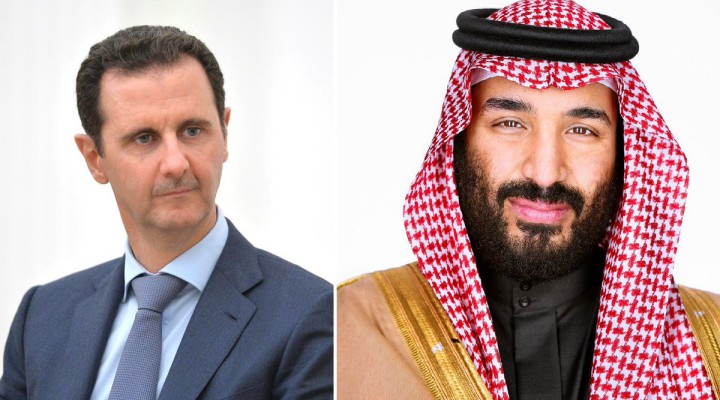Syria and Saudi Arabia make up

Riyadh’s strategic realignment is accelerating the reconciliation process with Damascus
According to a Reuters report citing three sources, Syria and Saudi Arabia have agreed to restore diplomatic relations and reopen embassies after next month’s Eid al-Fitr. If that happens, it will deal a heavy blow to the US, shatter Israel’s dreams of bringing Saudi Arabia into the normalisation process and the so-called ‘peace treaties’ known as the Abraham Accords, and usher in a new era in the Arab world.
The main obstacle to the two countries restoring ties was Syria’s strong relationship with Iran. The Syrian leadership turned down offers worth tens of billions to sever it. But now, after Saudi Arabia signed the Beijing agreement with Iran and invited President Ebrahim Raisi to visit Riyadh, that obstacle has been completely removed.
The Saudi-Syrian rapprochement is not a sudden turn of events. It has been several years in the making. It began in 2017, when the Saudi authorities cut off the Syrian opposition, closed down its office, and asked its staff to leave the country. Then in September 2020, Riyadh gave permission for Syrian lorries to transit its territory en route to the Gulf. In December of that year, the Syrian airline Cham Wings began regular flights between Riyadh and Damascus. Syrian Tourism Minister Mohammed Martini’s presence in Riyadh at the head of a large delegation to attend a World Tourism Organization conference was a further sign of gradual rapprochement.
But the biggest breakthrough came in May 2021, when — as revealed by this newspaper — Saudi intelligence chief Gen. Khalid Humeidan and Syrian National Security Adviser Ali Mamlouk held a secret talk in Damascus. Humeidan and his delegation were later received by President Bashar al-Assad.
The latest development follows several days of talks in Riyadh between Hamdan and a top Syrian intelligence official, believed to be Gen. Hossam Louka. The reopening of embassies is expected to be announced during a visit to Damascus by Saudi Foreign Minister Prince Faisal bin Farhan to Damascus in the near future. He spoke positively about Syria at his joint press conference with his Russian counterpart Sergey Lavrov in Moscow earlier this month.
The stage for rapprochement was also set by the airlift of Saudi relief supplies to Syria after the recent earthquake. The sight of Saudi cargo planes laden with aid in Damascus, Aleppo, and Latakia airports was striking and auspicious.
These fast-moving diplomatic developments are all consequences of the radical realignment taking place in Saudi foreign policy. The Saudi leadership is increasingly turning its back on the US and the West in general, convinced that the American era is drawing to a close and giving way to a new multi-polar world order led by China and the Russian duo. This strategic turnaround was reflected in President Xi Jinping’s visit to Riyadh late last year, the Chinese-brokered Saudi-Iranian agreement signed in Beijing, and Saudi Arabia’s OPEC+ agreement with President Putin in defiance of the US.
Next month’s Arab summit in Riyadh could witness Syria’s readmission to the Arab League and usher in a new era of inter-Arab cooperation and solidarity. That would hasten the unravelling of the US sanctions that are starving the Syrian people and enable the country to start rebuilding. Asad’s recent visits to Muscat and Abu Dhabi were just the start. It would not be surprising if his next destination were to be Riyadh after eleven years of estrangement.
The steadfastness of Syria’s army and people, its leadership’s astute and courageous approach to foiling the US-Israeli-Turkish conspiracy to dismember the country, and its forbearance and strategic patience, all played a major part in
breaking the blockade and bringing about these changes.
The official Arab order is returning to Syria, and a wronged Syria is returning to a welcoming and largely repentant — with the exception of two Gulf governments (Qatar and Kuwait) and the Kingdom of Morocco — Arab fold.
At the height of the war, when US-backed and Arab-funded armed opposition forces were at the gates of Damascus, at walking distance from the Republican Palace, Asad famously declared “the price of surrender is much higher than the price of steadfastness.”
Developments and changes on the ground today are proving him right.
https://www.raialyoum.com/syria-and-saudi-arabia-make-up/
 TheAltWorld
TheAltWorld 
0 thoughts on “Syria and Saudi Arabia make up”